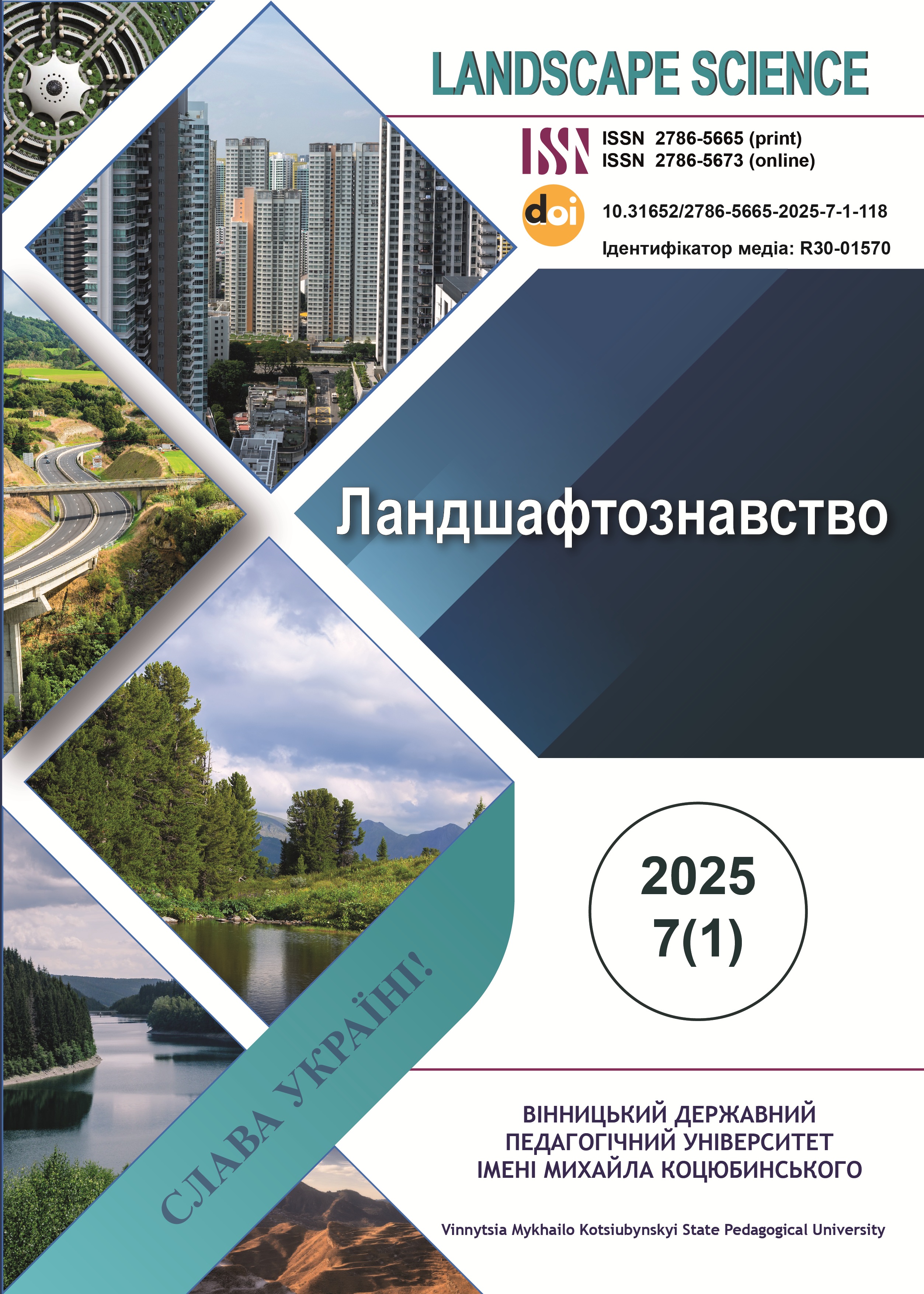Abstract
The formation of new and development of existing territorial communities requires taking into account not only Ukrainian but also foreign experience in rational nature management. The purpose is to analyze the publications of foreign scientists on the rational use of the landscape of territorial communities for its further implementation in Ukraine.
In the course of the study, the principles of consistency, complexity and interrelation with the relevant methods - analysis and synthesis of scientific generalizations of GIS technologies - were used. It is noted that Ukrainian geographers and landscape scientists have so far paid little attention to this problem. The problem of understanding by foreign scientists of the concepts of «territory», «landscape» and «territorial landscape» is considered, it is shown that they are used «freely» and there is no consensus. This sometimes leads to an unclear solution to the problem, especially in the field of planning the landscape structure of territorial communities. The article shows the importance of landscape studies for balanced territorial planning and knowledge of the landscape structure of community territories. Foreign scientists consider landscape structure as a factor that affects the provision of modern ecosystem services. Considerable attention is paid to the quality of the landscape of territorial communities, which is determined by using landscape assessment metrics. It is noted that the combination of the results of quality assessment and structural analysis of the landscape of territorial communities is one of the real ways of their further development. The analysis of foreign experience in the development of territorial communities, especially measures for the rational restructuring and further use of the landscape structure of their territories, should be continued. This experience will be essential in the postwar years of development of territorial communities in Ukraine.
References
Barreteau, O., Giband, D., Schoon, M., Cerceau, J., DeClerck, F., Ghiotti, S., James, T., Masterson, V., Mathevet, R., Rode, S., Ricci, F., & Therville C. (2016). Bringing together social ecological system and territoire concepts to explore nature-society dynamics. Ecology and Society 21(4). 42. https://doi.org/10.5751/ES-08834-210442.
Caron, P. (2015). Territory: With Government And Market, A Major Institutional Component To Achieve Resilience. Natures Sciences Sociétés, 23. 175–182. https://doi.org/10.1051/ nss/2015038.
Cosgrove, D. (1984). Social Formation and Symbolic Landscape; University of Wisconsin. Press: Madison. WI. USA.
Council of Europe. European Landscape Convention. (2000). Available online: https://www.coe.int/ en/web/landscape (accessed on 24 February 2025).
Elden, S. (2010). Land, terrain, territory. Progress in Human Geography, 34(6). 799-817. https://doi. org/10.1177/0309132510362603.
Franch-Pardo, I, Brian, M. Napoletano, G. B., Barrasa, S, & Luis Cancer-Pomar (2017). The Role of Geographical Landscape Studies for Sustainable Territorial Planning. Sustainability, 9(11). 2123. https://doi.org/10.3390/su9112123.
Herbst, H., Förster, M., & Kleinschmit, B. (2009). Contribution of landscape metrics to the assessment of scenic quality - the example of the landscape structure plan Havelland/Germany. Landscape Online. 10. https://doi.org/10.3097/LO.200910.
Jackson, J. B. (1984). Discovering the Vernacular Landscape. Yale University Press: New Haven. CT. USA.
Lamy, T., Liss, K., Gonzalez, A., & Bennett, E. M. (2016). Landscape structure affects the provision of multiple ecosystem services. Environmental Research Letters, Volume 11. Number 12. 1-9. https://doi.org/10.1088/1748-9326/11/12/124017.

This work is licensed under a Creative Commons Attribution 4.0 International License.
Copyright (c) 2025 Томас Адальбертович Рожі

